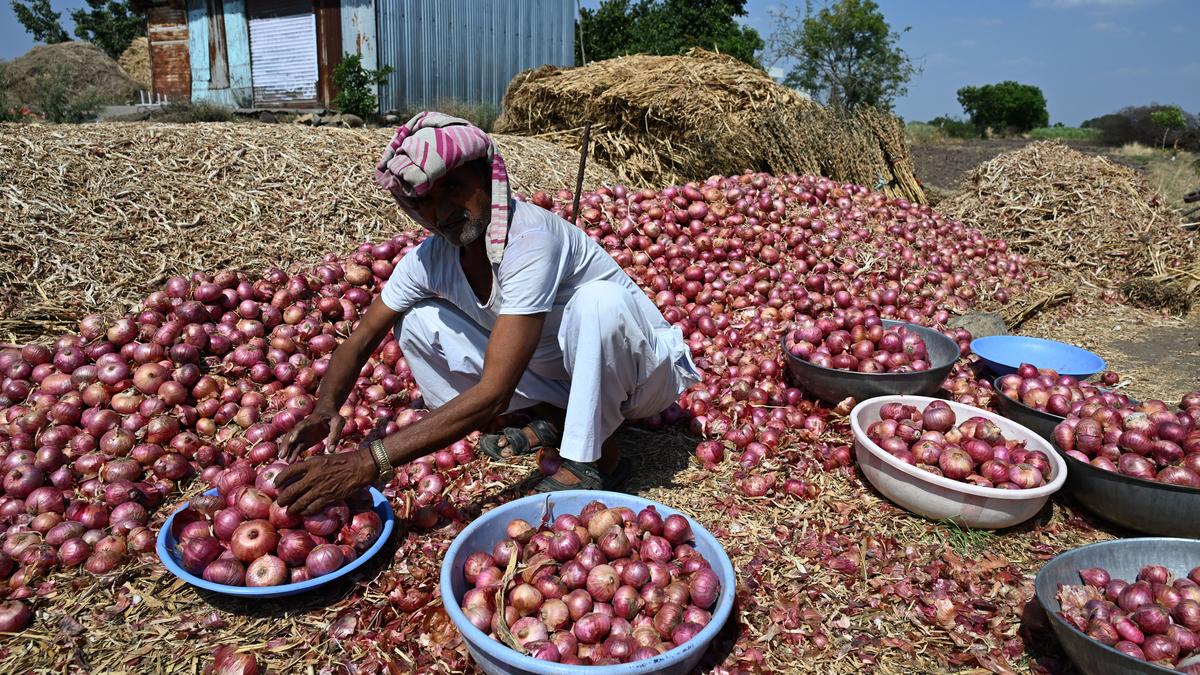Now Reading: Farmers Seek ₹3,000 MSP Amid 15% Dip in Onion Prices at Maharashtra’s Lasalgaon
-
01
Farmers Seek ₹3,000 MSP Amid 15% Dip in Onion Prices at Maharashtra’s Lasalgaon
Farmers Seek ₹3,000 MSP Amid 15% Dip in Onion Prices at Maharashtra’s Lasalgaon

Swift Summary
- Wholesale onion prices have dropped by nearly 15% over the past two weeks at Lasalgaon, Maharashtra, Asia’s largest onion market.
- Farmers’ associations held a meeting on July 28, 2025, to demand government intervention due to prices lower than production costs.
- Farmers seek an assured Minimum Support Price (MSP) of ₹3,000 per quintal compared to the current average market rate of ₹1,275 per quintal.
- Additional demands include: a long-term export policy, immediate government procurement at MSP rates, compensation for losses incurred below production costs in recent months, establishment of processing units with Central support, subsidised transport costs and fuel rates, and buffer stock procurement exclusively through market committees at no less than ₹3,000 per quintal.
- Unseasonal rainfall in May and increased arrivals from Rajasthan, Karnataka & Madhya Pradesh contributed to inconsistent supply and falling prices recently.
- Farmers warn of Statewide protests if demands are not addressed by August 10.
Indian Opinion Analysis
The sharp decline in onion prices underscores ongoing challenges faced by India’s agricultural sector around price volatility and farmer income stability. Onion growers in Maharashtra highlight this as an issue that requires both immediate relief measures-such as MSP implementation-and systemic reforms like transparent policies on export restrictions or buffer stock management schemes. While the association’s proposed MSP exceeds current market rates significantly (₹3k vs ₹1.275k), considering actual production costs ranging between ₹1.8k-₹2k may grant merit to their demand for fair pricing frameworks.
Long-term export strategies promoted by farmers suggest attempts to address recurring crises caused by fluctuating overseas trade regulations affecting domestic markets unpredictably-a clear indicator that proactive policymaking might reduce reliance on ad hoc interventions during price crashes or spikes.
As August approaches with potential farmer mobilizations statewide pending governmental response outcomes-the broader implication centers around balancing agricultural economics alongside sustainable strategies mitigating external disruptions tied weather effects logistical interregional arrival disparities observed earlier affecting commodity segments reliability consistency nationwide.
Read more: Source Article
























